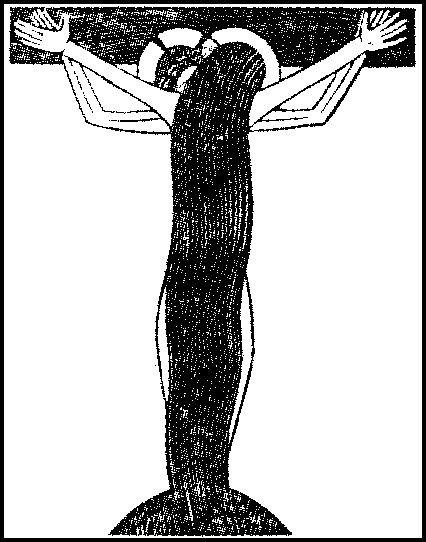Wood-Engraved
Book Illustrations
1904 - 1940

During the 19th Century, wood-engraving was used solely for illustration, but, in the early part of the twentieth century, British artists began to experiment with "an adventure of discovery," creating an autonomous medium. The great split was between those who wanted wood-engraving to be on a level with etching and other graphic arts, and the pure artists developing their own singular craft.
Ms. Selburne explains the primary difference between wood-engraving and woodcutting: White-line wood-engraving is like drawing with chalk on a blackboard: lines and textures which are incised with engraving tools into the end-grain of hardwood appear white when an impressions is taken from the inked surface of the block...The hardness of the wood enabled the engraver to achieve much greater detail and tonal refinement than is possible with woodcutting...in which the design is cut on the plank of softer wood with a knife or gouge. Pioneering wood-engravers such as Eric Gill, David Jones, Philip Hagreen are well-represented here: in fact, this 400+ page volume contains over two hundred plates, running from the pioneers to pre-WWII artists such as Agnes Miller Parker, Mary Groom, Dorothea Braby, and Blair Hughes-Stanton. In fact, the best thing I can think of to do with British Wood-Engraved Book Illustration is to tear the son-of-a-bitch to pieces --- not in rage, but in love. To cut out Robert Gibbings illustration for "Lamia" (man, woman, palm-trees). Or to eviscerate pages 231 - 239 and extract Robert Gill's lovely, lurid representations of "The Song of Songs." Then to gouge out pages 101 - 104 and mount Paul Nash's "Three Carts" (see Fig. 2 above) on the refrigerator door. Maybe, as well, to brutally excise Plates 82 - 85 --- being illustrations by John Farleigh of Shaw's play, The Adventures of the Black Girl in her Search for God --- to stick them on the wall behind the computer to contemplate again, and again, and yet again. And, best of all, to amputate the pages containing "The Nuptials of God" (see Fig. 1 above) by Eric Gill such a delicious take-off. We'd haul it down to The Blow-Up Photo Shoppe, turn it into a six- by twelve-foot poster to hang at the top of the bed, so we can see it, in love with it, as we are with love ... every day, and every night.
 Wood-
Wood-
Woodcut blocks, she explains, "often reveal the grain of the wood," and are "coarser and more robust." (The wood of choice for wood-engraving blocks is boxwood, being very hard and fine grained, with a "smooth and durable printing surface." The prints tend to be small, because "the diameter of the trunk is never large.") The text is nicely informed, and the wood-
The text is nicely informed, and the wood-
